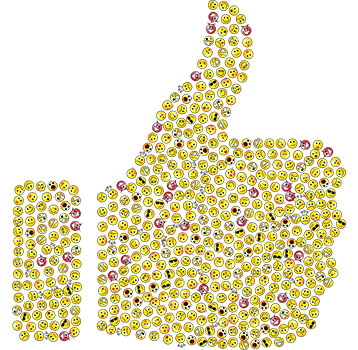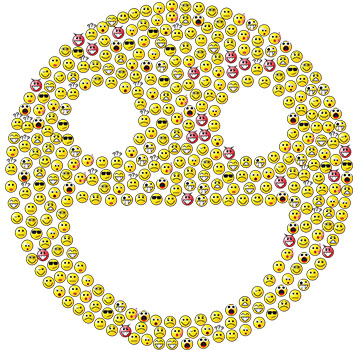
In this digital age, communication has evolved beyond traditional words and sentences. We express ourselves through a universal language that transcends borders and cultures – emojis. These small, colourful symbols have become an integral part of our daily conversations, adding depth, emotion, and humour to our digital interactions.
Each year, on July 17th, we celebrate World Emoji Day to honour the impact and history of these tiny pictograms. Join us as we delve into the fascinating journey of emojis, from their humble beginnings to their global significance.
The Birth of Emojis  :
:
To understand the significance of emojis, we need to travel back to the late 1990s in Japan. Shigetaka Kurita, a Japanese interface designer, created the first set of emojis for a mobile internet platform called NTT DoCoMo.
These rudimentary 12×12 pixel images were intended to convey emotions and add context to text messages. The word “emoji” itself is derived from the Japanese words “e” (meaning picture) and “moji” (meaning character).
The Global Expansion  :
:
Initially, emojis remained confined to Japan’s mobile industry. However, as communication technologies advanced and smartphones became ubiquitous, emojis transcended borders and started infiltrating global messaging platforms.
In 2010, Apple introduced emojis into its iOS system, making them available worldwide. This move was followed by other major tech companies, such as Google and Microsoft, integrating emojis into their operating systems.
The Unicode Consortium  :
:
The standardisation of emojis across different platforms and devices became essential to ensure consistency and seamless communication. This led to the establishment of the Unicode Consortium in 1991, an organisation responsible for developing and maintaining the Unicode Standard.
Furthermore, in 2010, the Consortium introduced the Unicode Emoji Subcommittee, dedicated to approving and regulating new emojis. This committee plays a crucial role in ensuring that emojis are universally recognised and understood.
Expanding the Emojiscape ↔️:
Initially, emojis were limited to basic emotions and everyday objects. However, as their popularity soared, demand grew for more diverse representation and inclusivity.
In response to this need, the Unicode Consortium began to expand the emojiscape. Emojis now cover a wide range of human emotions, professions, animals, food, and cultural symbols. Moreover, efforts have been made to include emojis representing various skin tones, genders, and relationships, fostering inclusivity and representation.
The Impact of Emojis  :
:
Emojis have transformed the way we communicate. They add nuance, tone, and emotion to text-based conversations, allowing us to convey complex messages succinctly.
These vibrant symbols have even become a form of visual shorthand, enhancing our storytelling abilities and bridging language barriers.
Emojis have also found their way into marketing campaigns, social media trends, and creative art forms, emphasising their significance as a cultural phenomenon.

World Emoji Day  :
:
To honour the impact and ubiquity of emojis, Jeremy Burge, the founder of Emojipedia, designated July 17th as World Emoji Day in 2014. The date was chosen to coincide with the calendar emoji, which displays July 17th.
People from all around the world come together to appreciate these small yet powerful pictographs that have become an integral part of our digital conversations. World Emoji Day encourages discussions about the cultural and social influence of emojis, their evolution, and their ability to transcend language barriers.
It’s a time to reflect on how emojis have transformed the way we express emotions, convey messages, and add a touch of creativity to our digital interactions. From simple smileys to an extensive range of symbols, animals, food, and activities, emojis have become a universal language that unites people across different backgrounds and languages.
Additionally, on World Emoji Day, individuals, organisations, and social media platforms often engage in emoji-themed events, campaigns, and challenges to celebrate the delightful and colourful world of emojis.
Car Emoji Evolution :
:
Over the years, the car emoji has undergone a fascinating visual evolution on various devices. When emojis first emerged, the car emoji featured a simplistic representation of a vehicle, typically resembling a box with wheels.
As technology advanced and device displays became more sophisticated, the car emoji gradually transformed into a more detailed and recognisable depiction of a car. Different platforms and operating systems started to incorporate their own design interpretations, ranging from compact hatchbacks to 4x4s or even vintage models.
With time, the car emoji gained finer details, such as distinct body shapes, windows, and sometimes even headlights. The evolution of the car emoji reflects not only the advancements in digital artistry but also the growing emphasis on visual authenticity and diversity in emoji representation.
World Emoji Day serves as a reminder of the transformative power of emojis in our digital world. From their humble beginnings in Japan to becoming a global phenomenon, emojis have revolutionised the way we communicate, transcending language barriers and fostering inclusivity.
So, as it is July 17th, let’s take a moment to appreciate the impact of these tiny pictograms and revel in the colourful and expressive world of emojis. Happy World Emoji Day!

